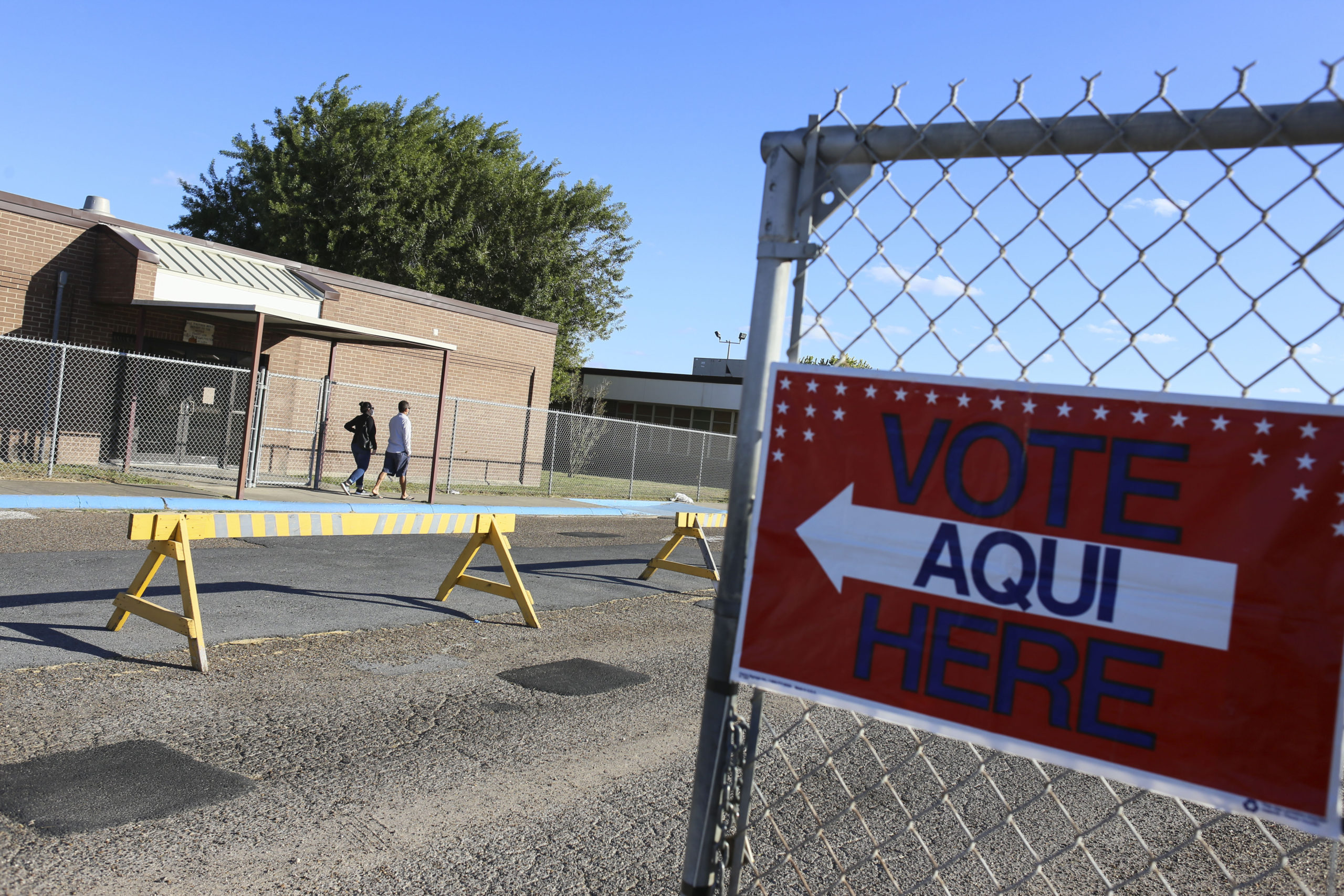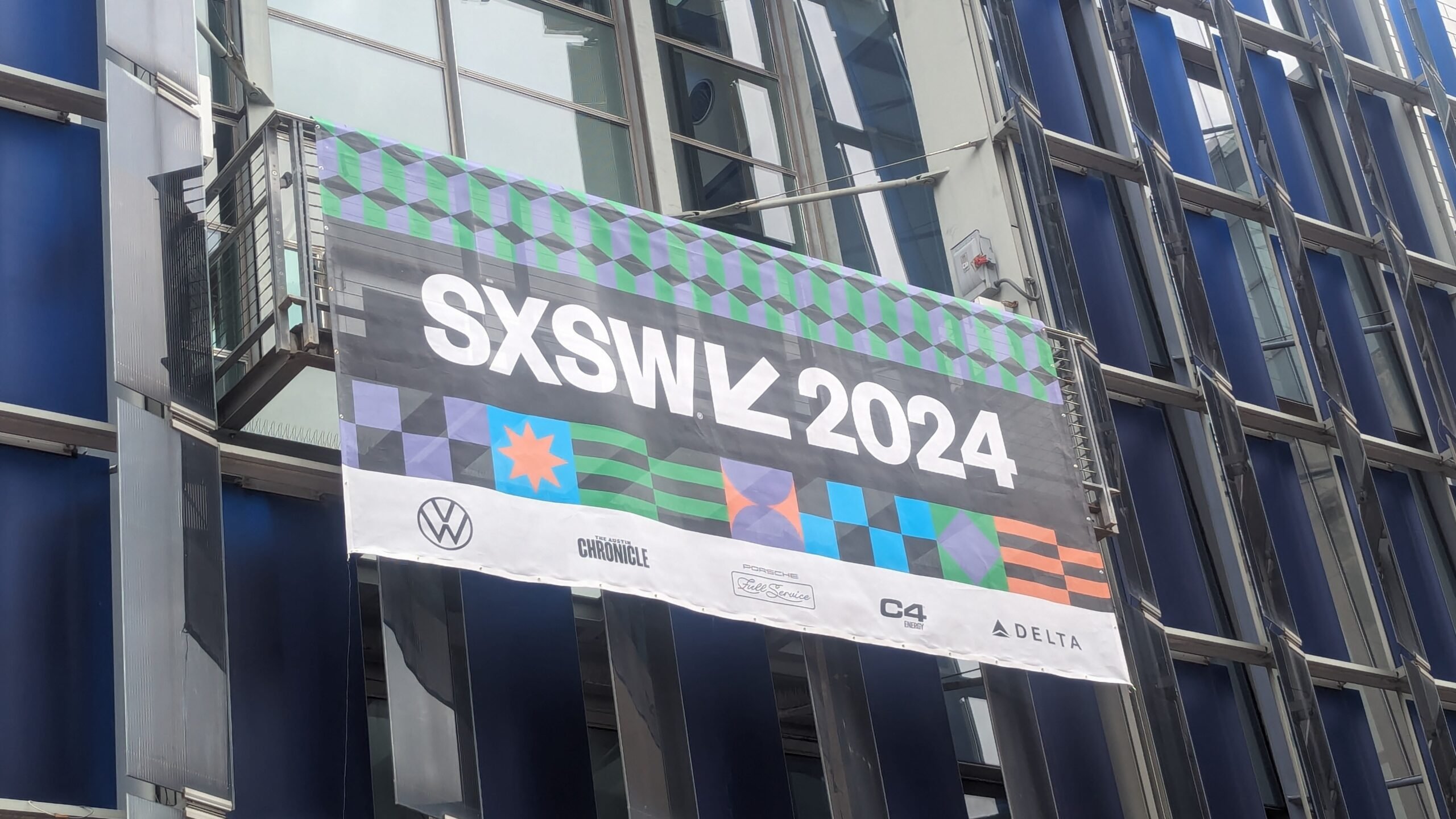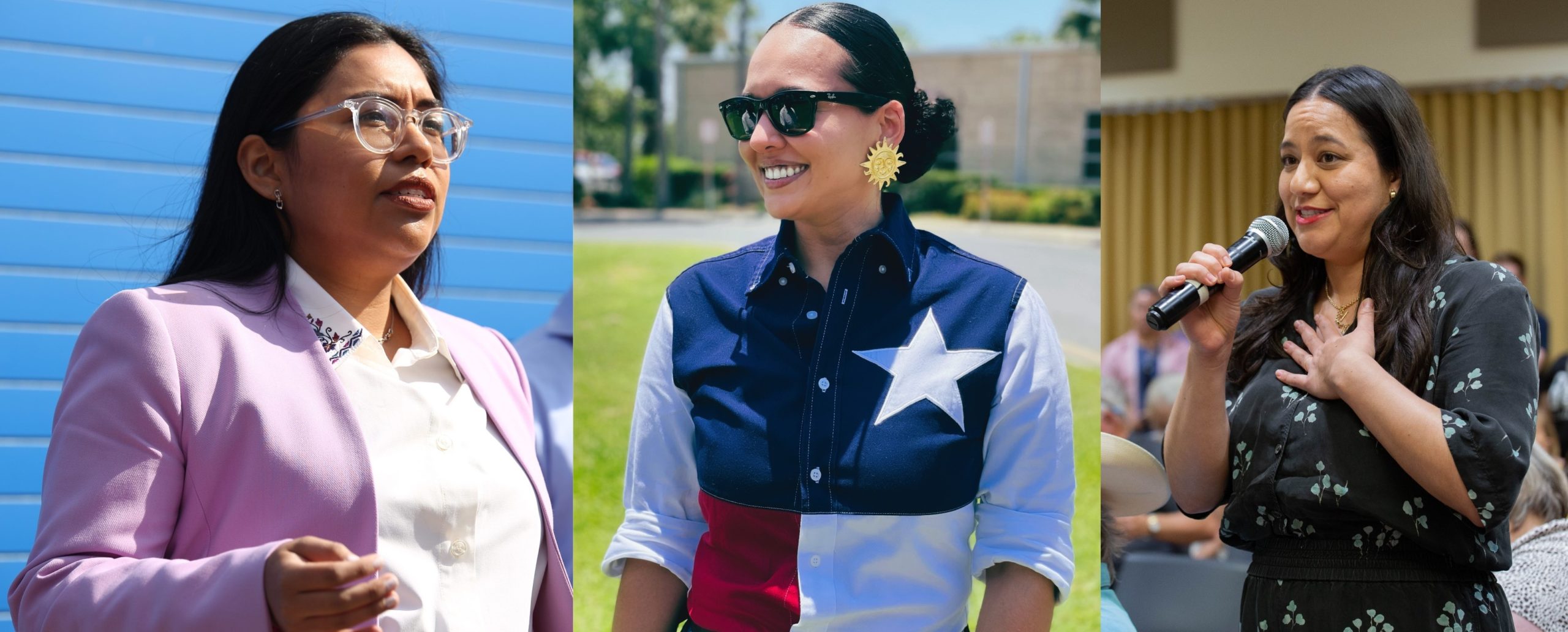
Local Organizers Explain the Republican Surge in South Texas
Democrats have long taken Latino voters for granted, while Republicans have worked to fill that organizing void.

Above: Voters walk to the polling site entrance at Burns Elementary School in Brownsville on November 3.
Danny Diaz wasn’t shocked when he heard about the Republican surge along the Texas-Mexico border that confounded so many national pundits last week. The majority Latino region has long been a Democratic stronghold, communities there have been ravaged by COVID-19, and polls indicate widespread disapproval of Donald Trump’s border wall. Yet local organizers like Diaz, the get-out-the-vote coordinator for Rio Grande Valley nonprofit La Unión del Pueblo Entero (LUPE), sensed days and weeks ahead of the election that the region would turn out for Trump.
Even as local turnout surged, border counties largely shifted right, shrinking Democrats’ margins of victory in the presidential race and in key Congressional and state races. Starr County, one of the poorest in the U.S. and with the highest share of Hispanic residents, had the biggest shift. Barack Obama won by 73 points in 2012. In 2016, Hillary Clinton won by 60. This year, Joe Biden led by just five points. Local Democratic Congressman Vicente Gonzalez, who handily won re-election last cycle, hung onto his seat by less than three points.
“Hopefully this is a wake-up call for the state and national party that it cannot take the Latino community in South Texas for granted,” says Gonzalez, who believes the presidential race impacted his own narrow margin of victory and other local down-ballot races. “I think the party at the state and national level should’ve been investing more in communicating and knocking on doors.”
“Hopefully this is a wake-up call for the state and national party that it cannot take the Latino community in South Texas for granted.”
This isn’t the first time Democrats have failed to attract Latino voters in Texas. In 1992, Bill Clinton won less than 60 percent of the vote in Hidalgo County. In 2004, George W. Bush won nearly half the Latino vote statewide. Because the border is historically blue, Democrats have long taken those voters for granted, Diaz says. And Republicans have worked to fill that organizing void. According to ten local organizers, the election results underscore a historic and continued lack of Democratic outreach in the region, which progressives said was exacerbated by limited in-person canvassing due to the pandemic. Even as some pundits and politicians claimed the path to Democratic victory in Texas would run through the Rio Grande Valley, organizers say the party again failed to turn out voters in the region or clearly articulate its platform. Meanwhile, local conservative groups mobilized get-out-the-vote efforts at an unprecedented level.
Diaz says the Democratic primary results should’ve been a clear warning. Bernie Sanders won a vast majority of South Texas counties, and in some, like the more populous Cameron and Hidalgo Counties, Biden came in third behind Michael Bloomberg. Diaz says local voters knew and understood Sanders’ platform: He stood for Medicare for All and a higher minimum wage. But Biden’s platform wasn’t as clear. By contrast, a family member told Diaz, “Trump just told me what he’s going to do.”
“The real story is that the Democrats left votes on the table with a lack of clear messaging, or any messaging,” says Sylvia Gonzalez-Gorman, a political science professor at the University of Texas Rio Grande Valley. To Diaz, the implication was this: “We’re going to go for the suburban voters because we’ve already got you guys in the bag.”
“The real story is that the Democrats left votes on the table with a lack of clear messaging, or any messaging.”
The Biden campaign only employed five field organizers for the vast border region that spans from El Paso in the west to the eastern edges of the Rio Grande Valley and is home to more than 3 million Texans, according to Amanda Elise Salas, Biden’s regional organizing director for the area. Salas, who worked for the Bloomberg campaign in the primary, says she couldn’t get a political organizing job in South Texas for six months before joining the Biden team in September, because, she says, no one was hiring. She wishes she had more “boots on the ground,” and earlier, but she says Democrats’ failure to invest in political organizing in the region isn’t new. “When you don’t allow for deep investment into your communities, with enough time—I’m not talking two months, I’m not talking an election cycle, I’m talking long-term investment—when you don’t do that for areas like us, full of marginalized people, there’s no reason for us to trust them,” says Salas, a McAllen native. “And I’m not speaking as a political person, I’m speaking as a community member.”
Getting people to vote can be especially difficult in South Texas, where many aren’t familiar with the voting process or haven’t voted before, she says. Historically, the Valley has had low turnout compared to the rest of the state, and even with record turnout this year, many counties there lagged behind the state average. With some neighborhoods miles apart, in-person door knocking takes a longer time than in many urban areas. And Salas says the Biden campaign has relied on phone banking since early March, when it halted door-to-door campaigning in light of the pandemic. But many residents don’t have access to quality Wi-Fi or cell service.
This is as local nonprofits working to register voters were “scrambling for resources,” says Jessica Cisneros, a progressive who challenged conservative Laredo Democrat Henry Cuellar for his congressional seat earlier this year. “It was tough to see them try to do the work when they were trying to perform miracles without the resources.”
“You can’t put the Latino vote in one box.”
Salas also argued that Democrats failed to produce culturally and geographically specific messaging for Latino communities, a sentiment Gonzalez, the congressman, echoed. “You can’t put the Latino vote in one box,” Salas says. From Phoenix to Miami to the Rio Grande Valley, differences and nuanced communication should be reflected in campaign materials, she says. “Just because things are translated in Spanish doesn’t mean they will be culturally accepted.”
Meanwhile, Republican organizers in the region mobilized voters at new heights. Starting in the summer, members of the Hidalgo County Republican Party and Hidalgo County Young Republicans (HCYR) phone banked multiple times a week and hosted biweekly block walks, targeting the precincts most likely to turn red. According to HCYR president Alma Perez, the group registered between 200 and 250 people per day in the month before the election. Their efforts paid off: Trump won 41 percent of the county’s vote, up from 28 percent in 2016. HCYR itself more than doubled in size since 2016; in just the last year, it grew from around 130 to 230 members.
Meanwhile, conservative organizers say that local “Trump trains”—car rallies where Trump supporters would drive around town—energized the Republican base, and made voting for Trump less of a stigma in a region that’s repeatedly been the target of his rhetoric and policies. Rolando Rodriguez, the assistant regional director for Latinos for Trump, organized a series of Trump trains in Hidalgo County, some with as many as 4,000 cars. That inspired Ross Barrera, Starr County’s GOP chairman, to organize his own. “We’ve been dead,” Barrera says of his county’s chapter of the Republican Party. “I didn’t feel we had the base to do this, but we did the Trump train, and we got to meet a lot of people who were Republican and we never knew they were.” So each night during the three weeks of early voting, he gathered volunteers to phone bank for Republican candidates. “I said, you know what, we could do something here.”
In an informal poll Barrera conducted among 800 to 1,000 Starr County Trump voters, he says the most common reason people told him that they voted for Trump was job precarity, specifically in the oil and gas industry. Oil and gas extraction, along with petroleum and coal manufacturing, are two of the top ten industries in South Texas, according to the state comptroller, and the industry has tanked this year. And with law enforcement agencies and the Border Patrol as other major employers, Salas, Biden’s regional organizing director, says national calls to “defund the police” don’t always resonate. Protests against police brutality by white officers against Black people often fall flat in the vastly Latino region, where “the law enforcement looks the same as us,” she says.
Organizers point to these priorities to explain that the massive shift can’t be chalked up to Republican outreach efforts alone. The small, rural Zapata County, which Trump won by five points this year after losing it by 33 in 2016, doesn’t have an active chapter of the Republican party. No organizers reached by the Observer knew of a significant GOP get-out-the-vote campaign there.
Now the question is, will the Republican surge last? “Moving forward it will be interesting to see: Are people just voting for Trump?” Diaz says. “Or are people going to stay with the Republican party moving forward, even if Trump’s not on the ballot?” Conservative organizers are optimistic their hold is here to stay. But Gonzalez thinks the region was swept by a temporary “Trump bump.” So does Gonzalez-Gorman, who believes Democrats saw how “this election exposed the weakness of their ground game” in communities of color. But, that’s been clear for a while now, she says. “We go through this every four years. When is it going to click?”
Read more from the Observer:
-
Texas Has Elected A Climate Change Denier to the Railroad Commission: Newly elected commissioner Jim Wright will be one of three people in charge of regulating the state’s oil and gas industry. He doesn’t believe that flaring contributes to climate change.
-
How We Got Here: Texas’ health system has been underfunded, understaffed, and unprepared for years. Here, COVID-19 found the perfect place to spread.
-
As Democrats Divebomb, the Texas Legislature Remains as White and Male as Ever: The legislative body’s makeup stands in stark contrast to the diverse state’s demographics.


